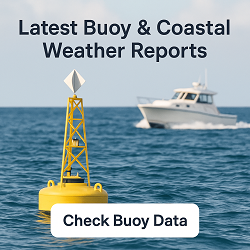Walcott, AR Weather Forecast and Current Conditions (72474)
Current Conditions From Nearby Station

Feels Like 87°F
at
Current Conditions From Nearby Station

Feels Like 87°F
at
Point Forecast at a Glance







This Date in Weather History
1970 - A nineteen month drought in southern California came to a climax. The drought, which made brush and buildings tinder dry, set up the worst fire conditions in California history as hot Santa Anna winds sent the temperature soaring to 105 degrees at Los Angeles, and to 97 degrees at San Diego. During that last week of September whole communities of interior San Diego County were consumed by fire. Half a million acres were burned, and the fires caused fifty million dollars damage.
More on this and other weather history
Walcott 7 Day Weather Forecast Details
Tuesday Sep 30

Day: Sunny, with a high near 89. Northeast wind around 10 mph.

Night: Partly cloudy, with a low around 65. Northeast wind around 5 mph.
Wednesday Oct 1

Day: Mostly sunny, with a high near 89. Northeast wind 5 to 10 mph.

Night: Mostly clear, with a low around 67. East northeast wind around 5 mph.
Thursday Oct 2

Day: Sunny, with a high near 88. East southeast wind around 5 mph.

Night: Mostly clear, with a low around 65. Southeast wind around 5 mph.
Friday Oct 3

Day: Sunny, with a high near 86. South southeast wind around 5 mph.

Night: Clear, with a low around 61. Southeast wind around 5 mph.
Saturday Oct 4

Day: Sunny, with a high near 85.

Night: Clear, with a low around 63.
Sunday Oct 5

Day: Sunny, with a high near 86.

Night: Mostly clear, with a low around 66.
Monday Oct 6

Day: Mostly sunny, with a high near 85.

Night: Partly cloudy, with a low around 66.
Sun & Moon Monthly
Sunrise 6:58 AM
Sunset 6:49 PM
Last Light 7:14 PM
Moonset ------

Contiguous United States Extremes
Mon's High Temperature
101 at 16 Miles Southwest Of Tecopa, CA
Tue's Low Temperature
28 at 9 Miles East-southeast Of Creede, CO and Leadville, CO
Weather Folklore
In the winter, a heavy snow is predicted if the barometer falls and the temperature rises.
Current subscribers - login to your ClearSky account
About Walcott, Arkansas
Walcott is an unincorporated community and census-designated place (CDP) in Greene County, Arkansas, United States. Walcott is located at the junction of Arkansas highways 141 and 168, 10 miles (16 km) west of Paragould. It was first listed as a CDP in the 2020 census with a population of 152.
Walcott has a post office with ZIP code 72474.
Content from Wikipedia, licensed under CC BY-SA 3.0.
How We Provide Better Local Weather
Current conditions: We use the nearest available station to your location - including professional MESONET/MADIS and local weather stations - often miles closer than regional airports.
Forecasts: National Weather Service point forecasts predict for your specific area, not broad regional zones, making them far more relevant to your location.

